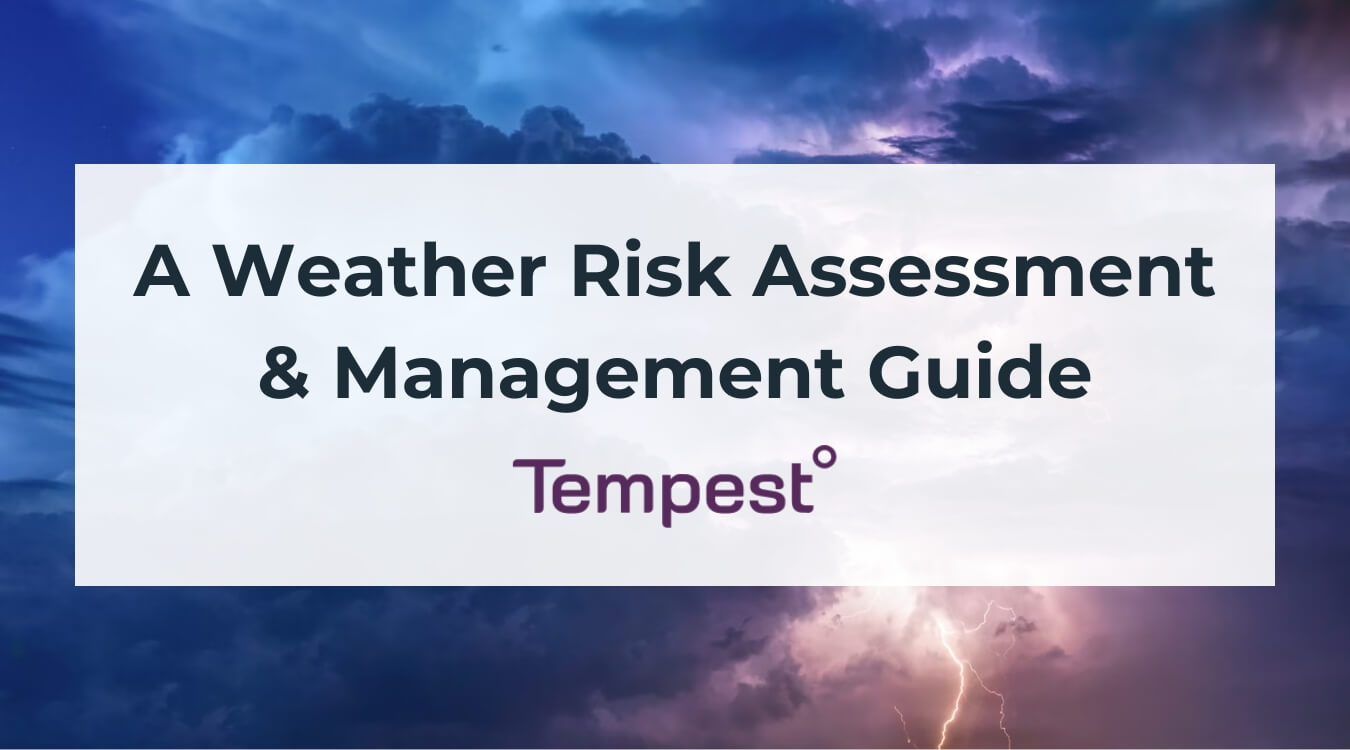
Extreme weather conditions can cause serious damage to utility infrastructure, leading to widespread power outages. Between 2000 and 2023, eight out of ten major U.S. power outages were caused by severe weather.
Increasingly volatile atmospheric conditions are creating new operational risks for utilities, from sudden wind shifts and rapid humidity changes to localized lightning and extreme heat that can stress lines and elevate ignition potential. These micro-scale weather dynamics require precise monitoring to anticipate hazards such as wildfire risk, line sag, and unsafe conditions for field crews.
Safeguard infrastructure, enhance safety, and boost customer satisfaction with TempestOne, the weather risk management solution built for utility teams.
Weather Risk Assessment: Quantifying Multi-Hazard Threats
A weather risk assessment is the process of identifying, analyzing, and quantifying potential weather-related threats to utility operations. It involves using real-time data streams from satellites, radar networks, and artificial intelligence to improve the accuracy of forecasts for storms, floods, wildfires, and other natural disasters.
Rather than treating each weather threat in isolation, modern weather risk management takes a multifaceted approach. It uses integrated systems to analyze how multiple hazards interact and compound, enabling utility teams to prepare better for severe weather.
For instance, a severe snowstorm can coat power lines and trees with heavy ice, leading to widespread power outages. These outages cost American businesses billions of dollars yearly. By integrating multiple hazard indicators, utility professionals can determine snowfall intensity, precipitation rates, and wind speed, enabling them to take proactive rather than reactive measures against severe weather.
Discover what hyperlocal weather is and why hyperlocal weather forecasts enhance safety.
Weather Risk Management: Turning Insights Into Operational Resilience
Having weather risk data is only one part of the equation when it comes to weather risk assessment. For risk assessments to provide value, utility professionals must turn insights into actionable strategies that enhance disaster preparedness, protect vital infrastructure, and ensure service continuity during extreme weather events.
By integrating weather risk solutions into their operations, utility teams can allocate resources effectively, adjust maintenance schedules, and develop flexible plans to deal with different hazards.
For example, multi-hazard monitoring systems can enable utility professionals to identify areas repeatedly prone to thunderstorms, floods, and other threats, allowing them to take proactive measures such as installing stronger poles or enhancing vegetation management to improve infrastructure resilience.
Multi-hazard monitoring systems can also help utility professionals determine the best time to deploy crews to repair damaged infrastructure, thereby enhancing crew safety. For example, if it’s too hot to be outside and there’s a wildfire risk, these systems can monitor dry vegetation, humidity, and wind intensity, allowing utility teams to deploy crews safely.
Hurricanes pose significant threats to infrastructure. Learn how hurricanes form to better assess potential infrastructure risks.
TempestOne: A Professional Weather Risk Solution
As climate conditions have become increasingly unpredictable, weather risk assessments have become essential for seamless utility operations. Multi-hazard monitoring systems can help utility professionals turn raw weather data into actionable intelligence, enabling them to take proactive measures to protect infrastructure and ensure service continuity.
From real-time tropical cyclone warnings and wildfire updates to configurable alerts, TempestOne offers everything utility teams need to identify, analyze, and quantify various weather-related threats before they adversely impact operations.
Contact us today to learn more about how TempestOne can strengthen your operational resilience.
